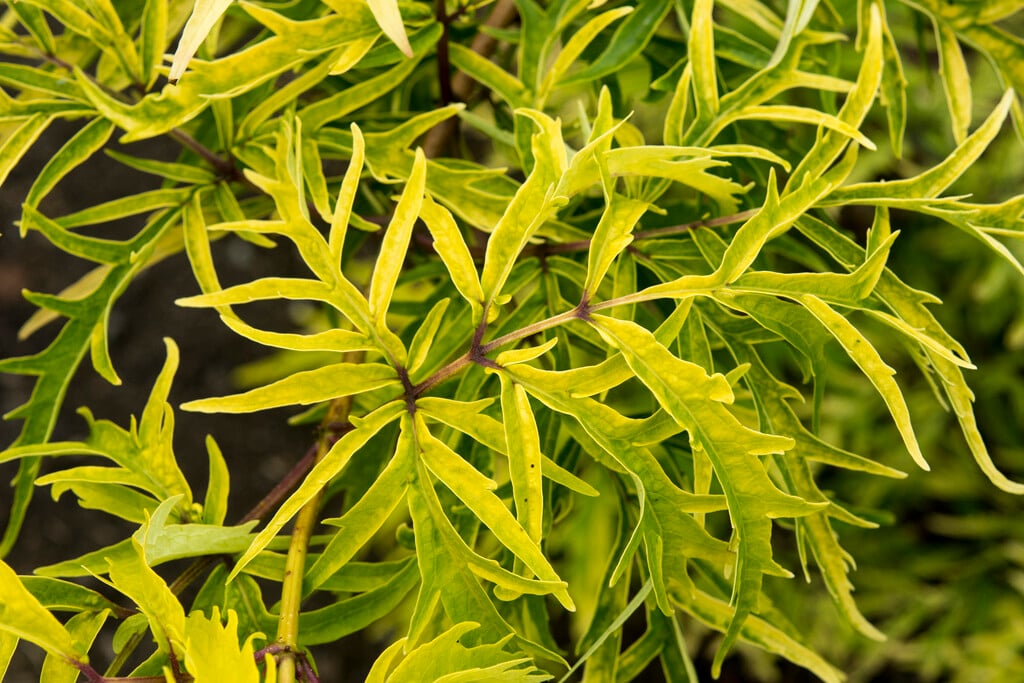Sambucus racemosa Lemony Lace ('Smnsrd4')
red elderberry [Lemony Lace]
A deciduous, compact, mound forming shrub with deeply divided golden to acid yellow leaves. Newly emerged leaves are often tinted bronze. It is grown principally as a foliage plant, but in early summer it produces frothy cream-white flowers followed in late summer by clusters of orange-red berries.

Size
Ultimate height
1.5–2.5 metresTime to ultimate height
2–5 yearsUltimate spread
1.5–2.5 metresGrowing conditions
Moisture
Moist but well–drainedpH
Alkaline, Neutral, AcidColour & scent
| Stem | Flower | Foliage | Fruit | |
| Spring | Yellow Gold Bronze | |||
|---|---|---|---|---|
| Summer | Cream White | Yellow Gold Bronze | Orange Red | |
| Autumn | Yellow Gold | |||
| Winter |
Position
- Full sun
- Partial shade
Aspect
East–facing or South–facing or West–facing
Exposure
Exposed or Sheltered Hardiness
H7Botanical details
- Family
- Viburnaceae
- Native to GB / Ireland
- No
- Foliage
- Deciduous
- Habit
- Bushy, Spreading branched
- Potentially harmful
- Harmful if eaten. Wear gloves and other protective equipment when handling Pets (dogs, cats): Harmful if eaten - for further information and contact numbers regarding pets, see the HTA guide to potentially harmful plants
- Genus
Sambucus can be herbaceous perennials, deciduous shrubs or small trees, with pinnate leaves and umbels or panicles of small creamy-white flowers followed by red, white or black berries
- Name status
Trade
How to grow
Cultivation
Grow in moderately fertile, humus rich, moist but well-drained soil in full sun or partial shade. Leaf colour is often better retained in partial shade. In full sun or exposed positions, leaf scorch may occur
Propagation
Take softwood cuttings in midsummer, or hardwood cuttings in mid-autumn to late-winter
Suggested planting locations and garden types
- Cottage and informal garden
- City and courtyard gardens
- Low Maintenance
- Flower borders and beds
- Wall side borders
Pruning
Pruning group 1, or suitable for coppicing every 3-4 years. Tolerates hard renovation pruning to restrict size
Pests
May be susceptible to aphids and glasshouse red spider mite
Diseases
May be susceptible to verticillium wilt and honey fungus
Love gardening
Sign up to receive regular gardening tips, inspiration, offers and more
View our Privacy Policy
Get involved
The Royal Horticultural Society is the UK’s leading gardening charity. We aim to enrich everyone’s life through plants, and make the UK a greener and more beautiful place.